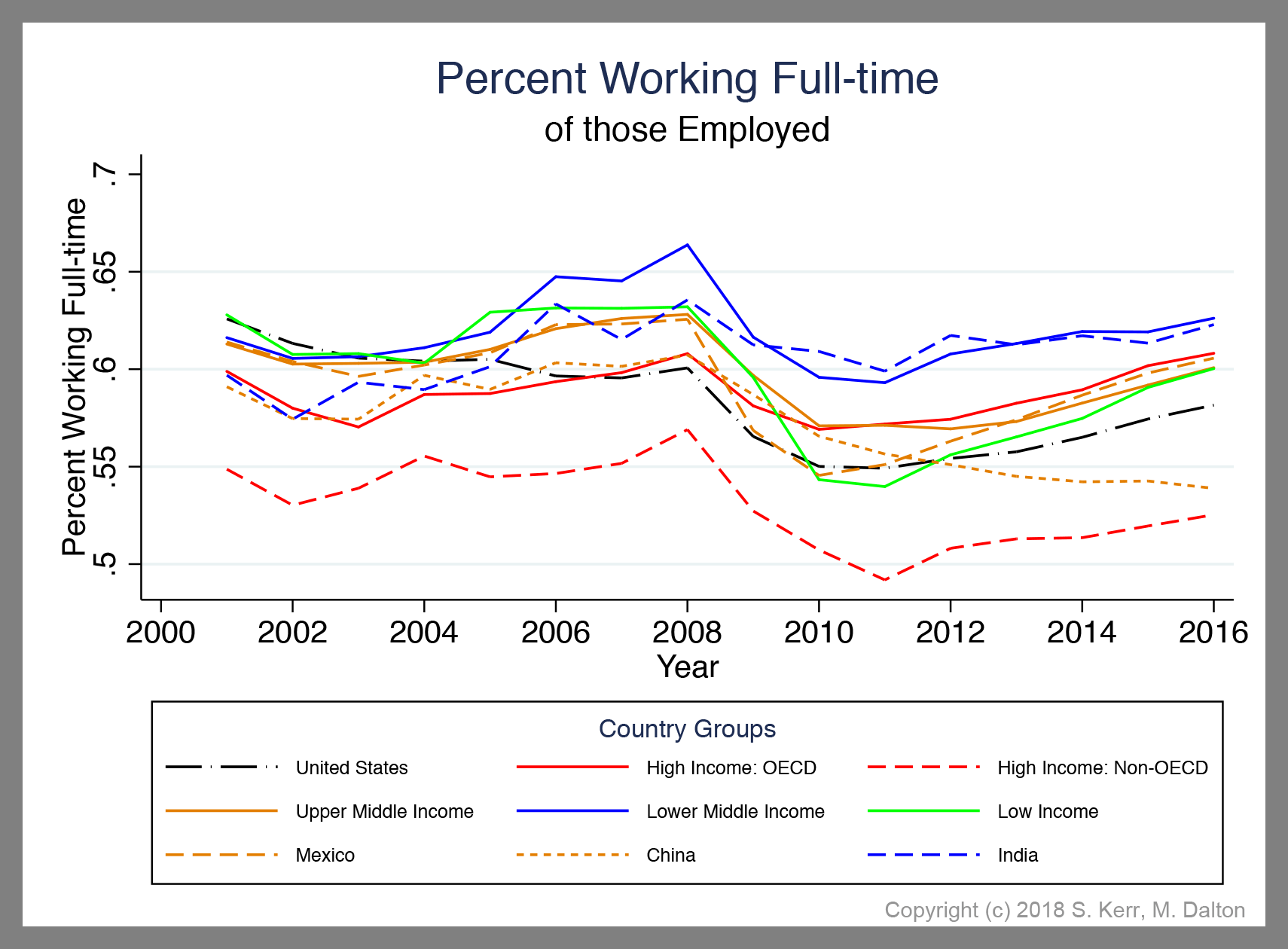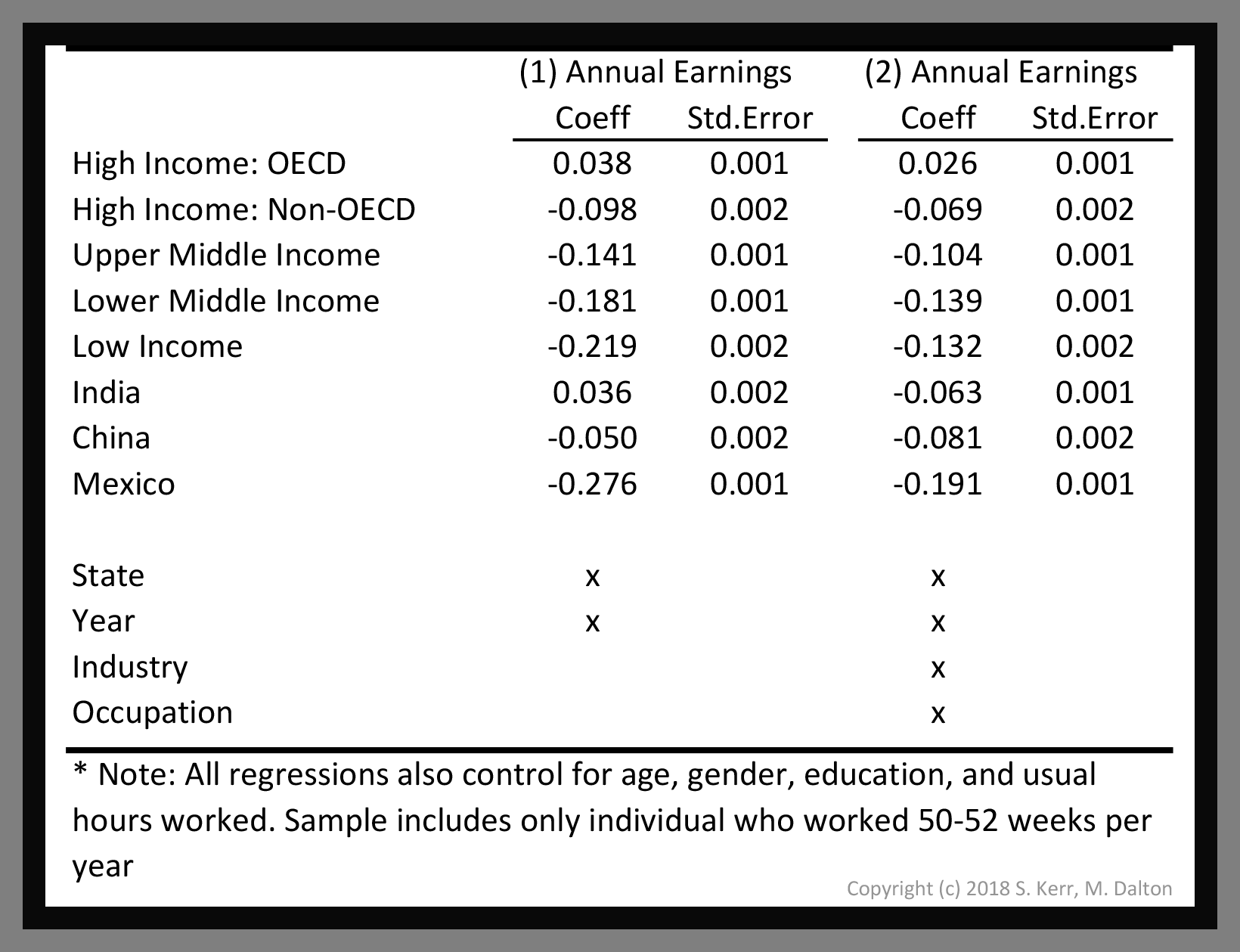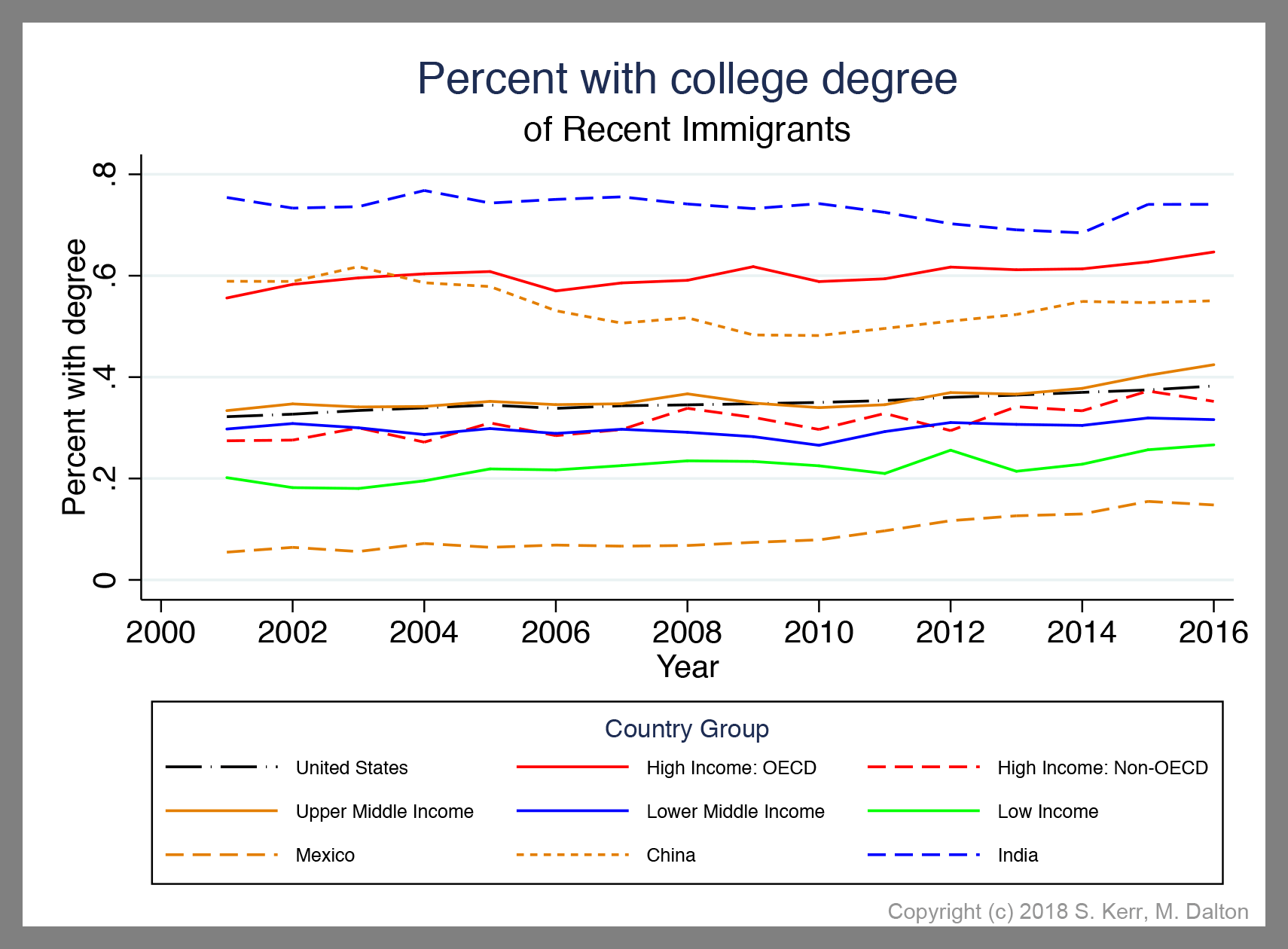Conditional on being employed, immigrants are also more likely to work full time (30 hours or more per week) than employed natives, with the exception of high-income non-OECD country immigrants in the post-recession years, as well as Chinese immigrants in the last few years of the data.

Even if we account for the immigrant – native differences in education, occupations, geographic locations, and other reasons that explain the pay gap, we still see all immigrant groups except for those from high-income OECD countries earning less than comparable natives.

So then, are immigrants from low-income countries poorly educated and not succeeding in the U.S. labor market? Perhaps surprisingly, origin country income and the average education level of the immigrant group are not as highly correlated as one might think.

While immigrants seem to find employment, most of them are not earning wages as high as the average American.

 Jim Strouse
Jim StrouseJim Strouse joined the Open Circle team in July 2011 as the Lead Trainer and Coach. Having worked in public schools, business, and higher education, Jim brought fifteen years of varied training, coaching, and teaching experience to this role. Jim was passionate about making positive change for students, teachers and administrators within education that tap into positive psychology, mindfulness and personal growth.
At Dean College in Franklin, MA, he served as an Adjunct Professor and Academic Coach, teaching the Dean Foundations seminar for incoming students. Jim has also worked as a corporate trainer and instructional designer, secondary school Health teacher, and Peer Mediation Coordinator in the Watertown Public Schools. Jim earned his master’s degree in Adult and Organizational Learning from Suffolk University and his bachelor’s degree in Sociology from Clark University. His two sons are the beneficiaries of the Open Circle Curriculum at their elementary school.